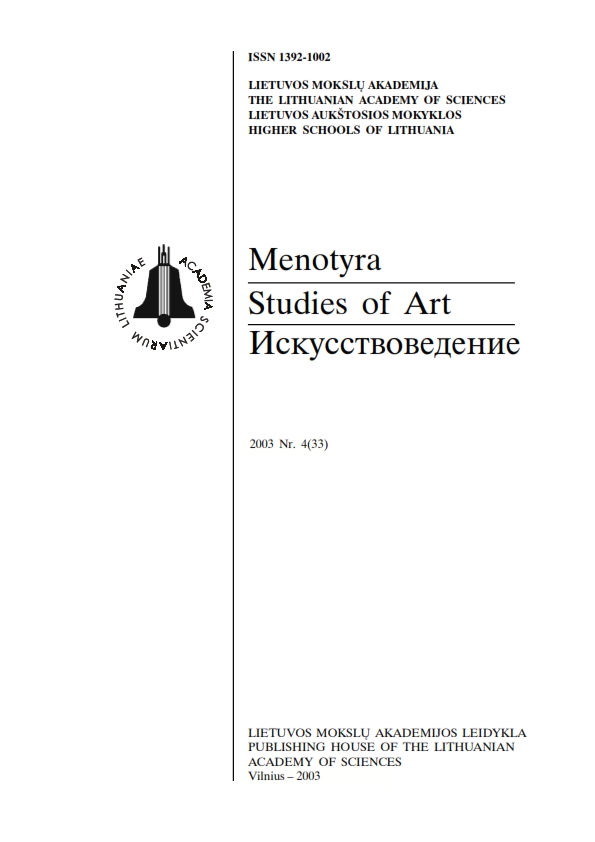Lietuviška choreografija ir XX a. I pusės Lietuvos teatro kultūra
Lithuanian choreography and theatrical culture in the first half of the 20th century
Author(s): Helmutas ŠabasevičiusSubject(s): Theatre, Dance, Performing Arts, Music
Published by: Lietuvos mokslų akademijos leidykla
Summary/Abstract: The first ballet performances staged in Lithuania were for the most part adaptations of foreign choreography works, but already starting with 1925 - the first year of ballet existence - there were attempts to create a specific Lithuanian choreography. In this article, Lithuanian choreography means pieces designed by the artists that developed and worked in Lithuania or those based on Lithuanian music. The present article aims to review, analyse and summarize the sparse original choreography created in Lithuania in the first half of the 20th century. The first major attempt in this area was Pavelas Petrovas' choreography for Lietuviškoji rapsodija (The Lithuanian Rhapsody) by Jurgis Karnavičius, which was followed by Nikolay Zverev's works for one-act ballets - Vytautas Bacevičius' Šokių sūkury (In the Whirl of Dance), Juozas Gruodis' Jūratė and Kastytis and Balys Dvarionas' Piršlybos (Matchmaking, 19 May 1933). In the period between 1925 and 1940, the most prolific and significant choreographer was Bronius Kelbauskas. He choreographed one-act ballets Vienos džiaugsmas (The Viennese Joy), Baltosios rožės (The White Roses), and Jūrininkai (The Seamen, 13 March 1937), as well as the complex and dramatic Boris Asafyev's performances The Fountain of Bakhchisarai (27 January 1938) and The Prisoner of the Caucasus (11 May 1939). The ballets composed by Kelbauskas mark the move of Lithuanian ballet and the choreographer himself toward Soviet Russian ballet, with an attempt to place emphasis on the dramatic and theatrical features of ballet and, in terms of choreography, to melt the elements of classical ballet, Russian "ballet-drama" of the 1930s and Lithuanian choreography simultaneously employing a number of acrobatic elements. This feature associates Kelbauskas' works of the 1930s with Nikolay Zverev's works from his Lithuanian period. Most of the choreographic features that formed within this period are characteristic of Kelbauskas' later works as well.
Journal: Menotyra
- Issue Year: 2003
- Issue No: 4(33)
- Page Range: 40-44
- Page Count: 5
- Language: Lithuanian

